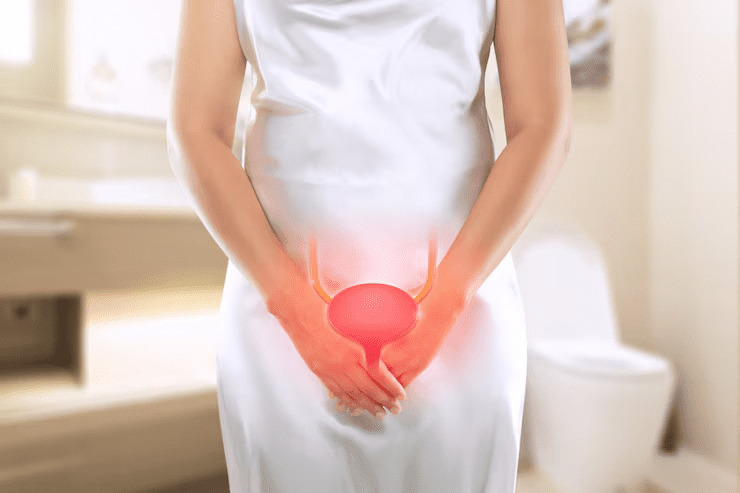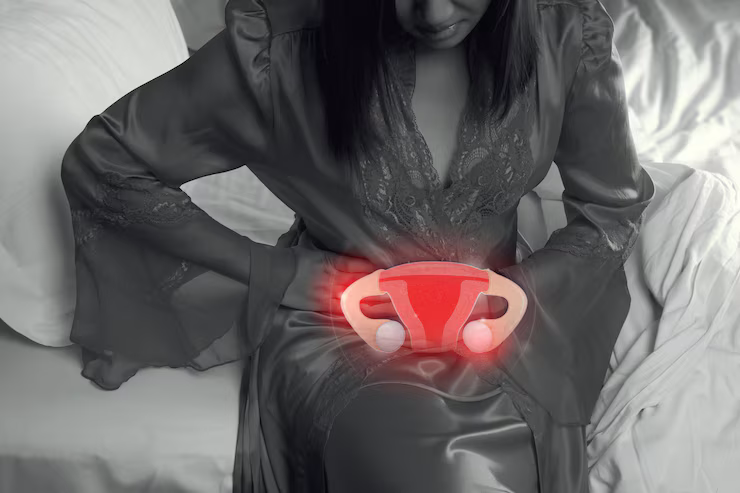Book an Appointment Today
Don’t let spine issues hold you back. Contact us today to schedule an appointment and take the first step towards a pain-free life. At asynchrony we’re here to support you on your journey to optimal spine health.
What Is Pelvic Floor Dysfunction?
The pelvic floor is a complex network of muscles and connective tissues supporting your bladder, uterus (in women), prostate (in men), and rectum. When these muscles are weak, tight, or uncoordinated, dysfunction can occur.


Common causes include:
- Childbirth
- Pelvic surgeries or trauma
- Chronic constipation
- Hormonal changes
- Poor posture
- Stress
How Physiotherapy Helps
Our pelvic health physiotherapists offer specialized care focused on restoring optimal pelvic floor function.
Key techniques include:
· Pelvic floor muscle retraining: Strengthening or relaxing targeted muscles
· Biofeedback therapy: Enhancing control through real-time feedback
· Bladder & bowel retraining: Improving daily habits and routines
· Manual therapy: Releasing tension and improving mobility
· Postural and core training: Supporting pelvic alignment and strength
The Osteopathic Approach
Osteopathic Manual Therapy (OMT) addresses structural and visceral imbalances that contribute to pelvic dysfunction. We treat the body as a whole—improving mobility, alignment, and nervous system regulation.
OMT techniques include:
· Visceral manipulation: Improving organ mobility and function
· Craniosacral therapy: Relieving tension in the nervous system
· Myofascial release: Freeing soft tissue restrictions
· Joint mobilization: Enhancing spinal and pelvic alignment
Why Combine Physiotherapy and Osteopathy?
Together, these therapies create a holistic and powerful approach to healing:
- Physiotherapy restores muscular strength and control
- Osteopathy relieves deeper tissue restrictions and systemic imbalances
This dual approach addresses both symptoms and root causes—like scar tissue, nerve irritation, or posture-related strain—often overlooked in standard treatments.
Conditions We Treat
Our clinic effectively treats a wide range of pelvic health concerns, including:
- Urinary incontinence (stress, urge, mixed)
- Diastasis Recti
- Pelvic organ prolapse
- Chronic pelvic pain (CPP)
- Dyspareunia (painful intercourse)
- Hypertonic (tight) pelvic floor
- Constipation and bowel dysfunction
- Post-surgical pelvic dysfunction (C-section, hysterectomy, prostatectomy)
Take the First Step Toward Relief
Pelvic floor dysfunction is complex—but you’re not alone. Our integrative team provides personalized care plans designed to restore function, reduce pain, and improve quality of life.
Contact us today to book an assessment with our pelvic health team and start your journey toward healing
FAQs
Certainly, pelvic floor issues can lead to incontinence. The muscles in the pelvic floor support the bladder, bowel, and other organs in the pelvis. When these muscles are weak, tight, or not working properly, they can have trouble controlling urine or stool. This can cause leakage or a sudden urge to urinate. Several factors, including pregnancy, childbirth, aging, surgeries, or certain health conditions, can weaken the pelvic floor muscles and raise the risk of incontinence. Doing specific exercises to strengthen these muscles and getting help early can greatly assist in managing or preventing incontinence.
You might have pelvic floor issues if you notice signs like leaking urine when you cough, laugh, or exercise. Other signs include a constant urge or frequent need to urinate, and trouble fully emptying your bladder or bowels. You may also experience straining during constipation, a feeling of pressure or heaviness in the pelvic area, pain during intercourse, discomfort in your lower back or pelvic region, and sometimes a sensation that something is bulging or falling out of your vagina. These symptoms can start off mild and may get worse over time. It’s important to talk about any of these with a healthcare professional. They can help diagnose the problem and suggest treatments to improve your quality of life
The most common pelvic floor disorder is urinary incontinence. This condition involves losing control of the bladder and unintentionally leaking urine. Many women experience this, especially after childbirth or as they age. It can affect daily life and confidence, but the good news is that it can be treated. Other common pelvic floor disorders include pelvic organ prolapse, where organs like the bladder or uterus shift down in the pelvis, and fecal incontinence, which involves difficulty controlling bowel movements. Of all these disorders, urinary incontinence is the one I’ve seen most people struggle with, making it the most widespread issue related to pelvic floor health.
Addressing pelvic floor weakness begins with recognizing those muscles and learning how to activate them properly. In my opinion, pelvic floor exercises—commonly known as Kegels—are the most effective method, which involves gently contracting and relaxing the muscles that regulate bowel and bladder activities. Performing these exercises regularly and accurately is crucial for noticing improvements. In some cases, collaborating with a physical therapist who focuses on pelvic health can be very beneficial—they can assist you in mastering the correct techniques and introduce other helpful methods such as biofeedback or manual therapy. Alongside exercises, keeping a healthy weight, steering clear of heavy lifting, and managing constipation can help alleviate stress on the pelvic floor. It’s a process, but with persistence and commitment, you can gradually restore strength and control
Based on observations, males can show pelvic floor dysfunction in different ways. You might deal with constipation or have problems during bowel movements, like needing to strain or feeling incomplete afterward. Some men may face urine leakage, have trouble starting the flow, feel a constant urge to urinate, or notice a weak urine stream. Pelvic discomfort is also common; it can show up as pain in the lower abdomen, groin, perineum (the space between the genitals and anus), or testicles, and some may feel like they are “sitting on a golf ball.” Sometimes, there might be discomfort during sexual activity or with erections, which can impact sexual performance. These issues can greatly disrupt daily life. If you experience any of them, it’s important to seek help, as there are effective ways to manage and improve pelvic floor health
When someone has pelvic instability, they might feel pain or discomfort in the lower back, hips, groin, buttocks, or down the thigh. Many describe this pain as a deep ache that can worsen when standing on one leg, walking, climbing stairs, getting up from sitting, or turning over in bed. Sometimes, there is a feeling of “giving way” or shifting in the pelvis, making movements feel less steady. Stiffness in the pelvic or lower back muscles and fatigue from constantly trying to stabilize the area are also common. Some people notice clicking or popping sensations inside the pelvis. In more severe cases, there may be pain during sex or a sense of pressure in the pelvic region. All these symptoms can affect daily activities and comfort, so it’s important to address them with proper care and support.
Request a Free Phone Consultation
Fill out the form and we will contact you.
Get In Touch In The Mean Time.
Want to Visit Our Clinic? Please Call Us
